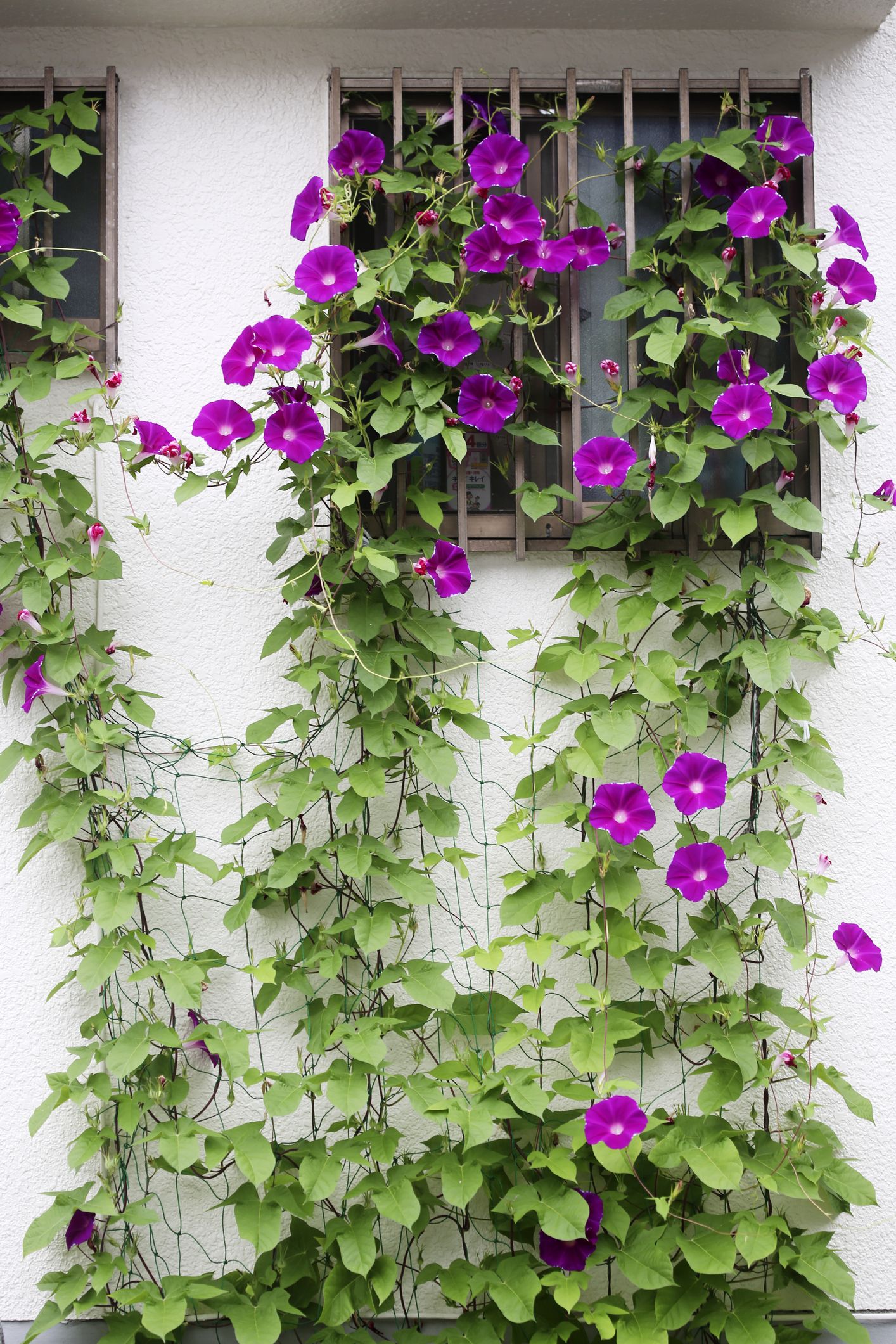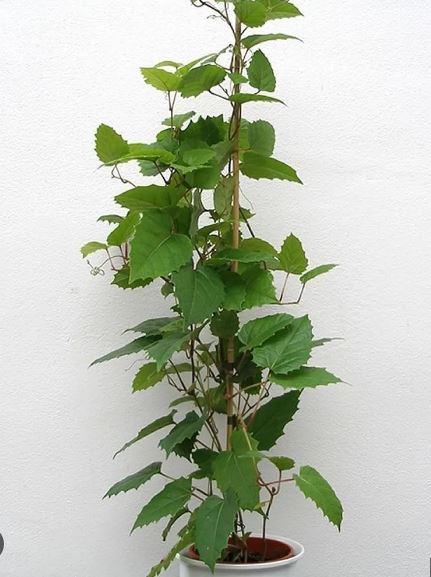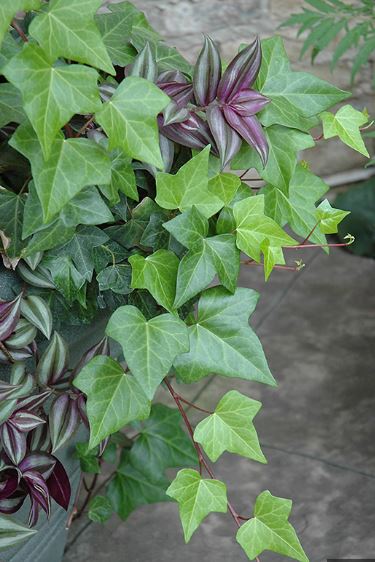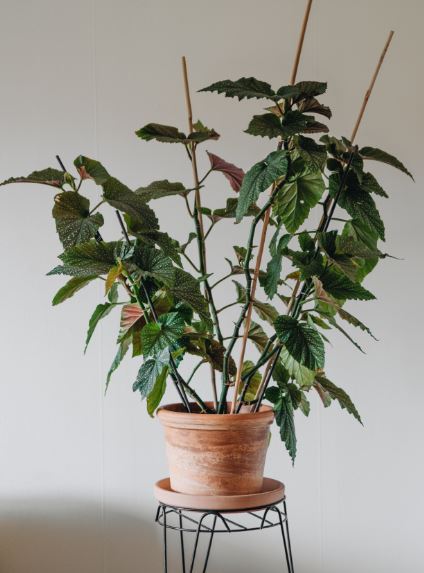![Best Indoor Climbing Plants: List of 33 [With Pictures]](https://thegardenhows.com/wp-content/uploads/2022/09/wisteria-1586163011.jpg)
Nothing is more gratifying than seeing the hard effort you put into growing your indoor garden pay off.
While visiting a nursery is a great way to discover new plants, it might be helpful to have a general concept of the type of plant you’re searching for in advance to make sure it will fit your environment.
Here are 33 of the most stunning indoor climbing plants, along with some basic care instructions.
Table of Contents
1. Swiss Cheese Plant (Monstera adansonii)

Due to its easy maintenance and lovely leaves, the Swiss cheese plant has become a fan favorite among people who grow indoor plants.
This tropical plant, which is native to Central and South America, may grow up to 8 feet tall inside and does best in bright, indirect light.
By preserving as much moisture and humidity as you can, you can keep your Swiss cheese plant as happy as possible.
In the winter, when the air is drier, mist the plant’s leaves frequently to maintain a moist but not saturated soil.
2. Creeping Fig (Ficus pumila)

The creeping fig, which is frequently used in landscaping, develops long vines of heavily populated leaves when cultivated indoors.
When young, this low-maintenance plant develops steadily but slowly; but, as it becomes older, it grows more vigorously and fast.
Keep your creeping fig in a location with abundant, diffused light and moderate moisture all year long. When possible, let the soil dry up in between waterings.
3. Micans Philodendron (Philodendron scandens ‘Micans’)

People often grow this tropical climber in hanging planters so the vines may span shelves or walls because it requires very little care and grows quickly.
The Micans Philodendron likes slightly less direct light than the other plants on our list thus far, and while it can handle strong, indirect light, too much sun will scorch its delicate leaves.
To prevent overwatering and root rot, water this beauty anytime the top 2 inches of its soil become dry.
4. English Ivy (Hedera helix)

English ivy can be quite a striking houseplant, despite the fact that it is invasive in the United States and can cause issues when planted outside.
Because it thrives in the shade, this incredibly low-maintenance climber is a terrific option for a less sunny region of your home where other plants might not do as well.
Ivy has to be routinely watered especially if the soil is dry. Young plants will probably do just fine without a misting, even if they benefit from humidity and may like one.
5. Black-Eyed Susan Vine (Thunbergia alata)

The magnificent and satisfying black-eyed Susan vine can even bloom in the winter when kept indoors, provided that the temperature doesn’t drop below 60°F and it has access to full sunlight.
This sun-loving vine normally has orange flowers, although there are numerous kinds with different solid-color and variegated blossoms. Frequent watering is necessary to keep the soil moist.
If you want to make your indoor black-eyed Susan vine moderate in size, expect periodic trimming. Nevertheless, this fast-growing beauty will undoubtedly be a wonderful addition to your indoor garden.
6. Angel Wing Jasmine (Jasminum nitidum)

If given proper care, the stunning flowering vine known as angel wing jasmine will make a statement in your house.
These climbers, however, are among the more labor-intensive plants on our list and are best suited for more experienced or intermediate gardeners.
During the growing season, your angel wing jasmine needs regular (biweekly) fertilization if you want it to flower.
As this beauty is susceptible to root rot, let the well-draining soil dry up in between waterings.
Particularly throughout the winter, keep your jasmine in a location that receives lots of bright, indirect sunshine. Avoid direct sunlight as it could scorch the foliage.
7. Arrowhead Plant (Syngonium podophyllum)

Fun indoor plants, arrowhead plants look especially attractive when grouped with other plants in a combo plant arrangement.
This easy-to-care-for plant has beautiful arrowhead-shaped leaves and requires little in order to survive.
Your arrowhead plant like the sun and thrives in direct, strong light, however it will probably be okay in regions with lower light levels. Just be prepared for slower and less dramatic growth.
For optimum results, don’t overwater your arrowhead plant; instead, water it frequently in well-drained soil and fertilize it periodically when it’s developing.
Prune periodically if you like a bushier plant.
8. Hindu Rope Plant (Hoya carnosa ‘Compacta’)

The Hindu rope plant is a colorful, albeit pricy, addition to any collection of indoor plants, and it’s ideal for novice gardeners. These plants have stunning waxy vines and are semi-succulents.
They will bloom frequently if you keep them in good health and make sure they get enough sunlight.
Like many succulents, the rope plant prefers well-draining soil in indirect light and will require less regular watering to prevent root rot.
You shouldn’t anticipate your Hindu rope plant to quickly exceed its pot. Although stunning, these plants grow slowly, which makes them a fantastic option for compact spaces.
9. Golden Pothos (Epipremnum aureum)

Due to its gratifying growth and low maintenance needs, the Golden Pothos is one of the most popular indoor plants. It is one of the few houseplants that can live in almost any environment.
Place your golden pothos in bright, indirect sunshine, though, and water them anytime the top few inches of soil become dry if you want to see more rapid development from them.
It’s time for a good watering if you see your pothos plant’s leaves starting to wilt and curl inward.
10. Passion Flower (Passiflora spp.)

Passion flowers may be just as beautiful when cultivated as part of your indoor garden because of their bright blooms, which make them easy to identify outside.
However, this plant is not a “beginning” houseplant and needs special attention to grow inside.
Passion flowers, in contrast to many other plants on this list, do well in direct sunshine and can withstand the extreme heat when placed near a window.
Your plant will be happy if you give it regular, but not excessive, watering, high humidity levels, and monthly fertilizer during its growing season.
If you give your passion flower careful attention, it might even bloom inside in a container.
11. Sweet Potato Vine (Ipomoea batatas)

Sweet potato vines are a great choice for novice gardeners because they require very little care and grow quickly.
Just put it somewhere with plenty of indirect, bright light, and water it frequently.
Although this climber enjoys moist soil, it is actually tolerant of some drought, so don’t be concerned if you intend to go out of town for a few days.
Regular trimming will be required to prevent overgrowth in these vigorous growers. Nevertheless, they are simple to grow, so feel free to share with friends or maintain several in different parts of your home.
12. Japanese Ivy (Hedera rhombea)

Japanese ivy is an extremely low-maintenance indoor plant, much like English ivy. It is a willing climber with aerial roots that are ideal for indoor development.
It can withstand almost any level of sunlight, though some bright, indirect light will promote development.
If you want to see your Japanese ivy climb, give it something to grow on, like a trellis, and water it anytime the soil starts to dry out.
13. Krimson Queen Hoya (Hoya carnosa ‘Krimson Queen’)

The Krimson Queen is a magnificent climbing plant with dramatic variegation on its foliage, not to be mistaken with the Krimson Princess Hoya.
Similar to the Hindu rope plant, the Krimson Queen Hoya thrives in bright, indirect sunlight and is grown in a pot with well-draining soil.
This slow-growing plant will reward you with lovely, long vines with waxy leaves if you let the top few inches of soil dry out between waterings.
14. Porcelain Flower Plant (Hoya publicalyx)

The porcelain flower plant, commonly referred to as a wax plant, is a gratifying houseplant that, given the correct care, can bloom.
When the top few inches of soil begin to dry up, this plant thrives in bright, indirect light with regular watering.
For optimal growth, you’ll need to maintain moist foliage, so mist your plant frequently, especially throughout the winter.
You can anticipate your porcelain flower plant to produce tiny clusters of star-shaped, pinkish-white blossoms if you take proper care of it.
15. Monstera Peru (Monstera karstenianum ‘Peru’)

The Monstera Peru stands out from other Monstera varieties thanks to its tall, ridged, dark-green leaves.
Compared to other varieties of Monsteras, it grows best in bright, indirect light but may withstand some lower light.
Avoid overwatering and instead wait until the top few inches of soil are totally dry before you water again. These plants thrive in high humidity, making them ideal for locations in your home with higher air moisture levels, such restrooms.
16. Lemon Lime Philodendron (Philodendron hederaceum ‘Lemon Lime’)

You will be rewarded by the Lemon-Lime Philodendron’s incredibly eye-catching yellow leaves.
These Philodendrons will look great just about everywhere in your house and make a statement.
It can tolerate lower light levels, though slower growth may result. Make careful to let the top few inches of the plant dry out in between waterings.
Pruning vines with sporadic leaf growth on a regular basis can keep your plant dense and healthy.
17. Satin Pothos (Scindapsus pictus)

As this pothos is susceptible to sunburn, plant in bright, indirect light for best growth.
Although they enjoy routine misting of their leaves, let the top few inches of soil dry out between waterings as they can also be vulnerable to root rot.
18. Pink Princess Philodendron (Philodendron erubescens ‘Pink Princess’)

The Pink Princess Philodendron is a sought-after houseplant that could be challenging to find, but if you’re lucky enough to have one of these beauties, you’ll love its eye-catching dark-green and pink variegated foliage.
Place your Pink Princess Philodendron somewhere it will receive a lot of bright, indirect light to ensure it keeps its lovely variegation.
Since this Philodendron is prone to root rot, water only when the top half of the soil dries out.
19. Wax Ivy (Senecio macroglossus)

An excellent low-maintenance houseplant that may thrive in a range of growth environments is wax ivy.
The succulent plant known as wax ivy thrives in cactus or succulent soil that dries out between waterings.
Keep your wax ivy in a location that receives bright light and take care to prevent root rot, and it might just repay you by blooming!
20. Chinese Money Plant (Pilea peperomioides)

Common indoor plants with little upkeep requirements include Chinese money plants.
These little, adorable plants thrive in bright, indirect light and have round leaves. Don’t let your Chinese money plant catch fire.
It’s advisable to let the soil almost completely dry out between waterings rather than overwatering these plants. When your plant needs water, you’ll notice that its leaves start to curl and turn inward.
21. Kangaroo Vine (Cissus antarctica)

The kangaroo vine is a wonderful addition to your collection of indoor plants because it grows quickly and needs little light.
As soon as they are established, these houseplants are hardy, so set aside a spot in your home for them.
Trim vines as needed to encourage thicker leaf growth if you start to detect lanky vines.
22. Cinnamon Hoya (Hoya lacunosa)

If maintained properly, cinnamon hoyas are low-maintenance houseplants that will reward you with tiny bunches of white blossoms.
Cinnamon hoyas thrive in bright, indirect light and don’t like being overwatered, just like the other hoyas on our list.
Between waterings, let the top few inches of soil dry off.
23. Brazil Philodendron (Philodendron hederaceum ‘Brasil’)

The Brazil Philodendron exhibits stunning foliage and, like the majority of philodendrons, requires little upkeep.
These plants benefit from bright, indirect sunlight for the quickest growth and have darker, variegated, heart-shaped leaves.
Every time the top few inches of soil start to dry out, deeply water your Brazil philodendron; however, use a well-draining container and soil mixture to prevent root rot.
24. Algerian Ivy (Hedera canariensis)

The Algerian ivy is a more eye-catching ivy because of its distinctive dark-green and white variegated leaves that shine out against the darker red stems.
Since they prefer medium light, their care is pretty straightforward. Consider moving your plant to an area with a little more light, though, if you see that the new leaves are not variegated.
Between waterings, let the top few inches of soil dry off.
25. Betel Leaf Plant (Piper betle)

Beautiful but slightly more demanding than some of the other houseplants on our list is the betel leaf plant.
Find an area of your home with less light for these climbers because they won’t thrive there.Keep the soil moist and place your betel leaf plant in well-draining soil.
You can freely water the leaves of these tropical plants frequently and prune them to maintain their dense growth because they prefer high humidity.
26. Mandevilla (Mandevilla splendens)

Mandevilla plants are quite simple to maintain and have eye-catching red leaves. The most important thing to keep in mind is probably to give your Mandevilla regular watering to keep it happy.
Keep the soil moist to keep the flowers healthy and happy, but make sure it drains well.
To aid the plant in storing energy, place your Mandevilla in an area that receives bright, indirect light and regularly remove blooms that have faded and wilted.
27. Marble Queen Pothos (Epipremnum aureum ‘Marble Queen’)

Another gratifying and low-maintenance type of pothos is Marble Queen.
The leaves have a marble-like appearance because to their intense variegation. They require relatively similar maintenance like other pothos kinds.
For best growth, keep your Marble Queen pothos in bright, indirect light and water after the top few inches of soil have become dry. To create a denser effect, prune lanky vines.
28. Bougainvillea (Bougainvillea spp.)

The blossoms of bougainvillea are infamous for being astonishingly vivid and stunning.
If this tropical beauty is grown indoors, it will flower easily if it has consistent access to strong, direct light.
Find a great windowsill for this climber because this tropical beauty needs sunlight to thrive.
When the top few inches of the soil start to dry up, water immediately. In the winter, when indoor humidity is at its lowest, mist the leaves frequently.
29. Pink Jasmine (Jasminum polyanthum)

Another lovely kind of jasmine that may be grown inside is pink jasmine.
It grows well with an indoor grow lamp if you don’t have a room in your house that is suited for its growth but enjoys bright, indirect light.
When the soil’s surface starts to dry up, water your pink jasmine and fertilize once a month during the growing season to encourage bloom development.
30. Angel Wing Begonia (Begonia lucerna)

Beautiful indoor plants with lots of growth diversity are angel wing begonias.
Place your begonia in a location with bright, indirect light and treat it with a phosphorous-rich fertilizer during the growing season if you’d like it to bloom.
However, if you’re more drawn to its greenery, put your begonia in a room with less natural light and nourish it with nitrogen-rich fertilizer when it’s growing.
When the top few inches of soil become dry, water it.
31. Kangaroo Pocket Plant (Dischidia vidalii)

The kangaroo pocket plant is a climbing plant with long legs that resemble hoyas and has thick, heart-shaped leaves.
Since it prefers lesser light, you can store this plant somewhere that doesn’t receive a lot of bright or direct sunshine.
Avoid overwatering and water your kangaroo pocket plant anytime the top few inches of soil become dry.
32. Maidenhair Vine (Muehlenbeckia complexa)

A climbing plant with tiny, heart-shaped leaves that develop densely on its vines is the maidenhair vine, also known as the angel vine.
Without pruning, this little plant can grow up to 3 feet tall and, given the right circumstances, will bloom.
Keep your maidenhair vine in an area with lots of direct, bright light, and water it if you sense the soil surface is getting dry.
To check if your plant is receiving enough sunshine, look for leaves and blossoms that are growing rapidly.
33. Mini Monstera (Rhaphidophora tetrasperma)

Last but not least, among those who appreciate houseplants, the mini monstera is a popular favorite.
This unrelated houseplant is characterized by leaves that resemble small monsteras and is a low-maintenance and prolific grower.
These vines will climb whatever surface they are near since they enjoy direct, bright light. To maintain high moisture levels in the soil and foliage, water when the soil feels dry.
For optimal results in the winter, spray the leaves of your little monstera.
Final Thoughts
With the right amount of attention and care, each one of the plants on this list would make a fantastic addition to your house and has the potential to become an authentic conversation starter.
Check the inventory of your neighbourhood nursery the next time you make a trip there to see whether they carry any of the climbing plants that are included on this list so that you can add them to your collection.
